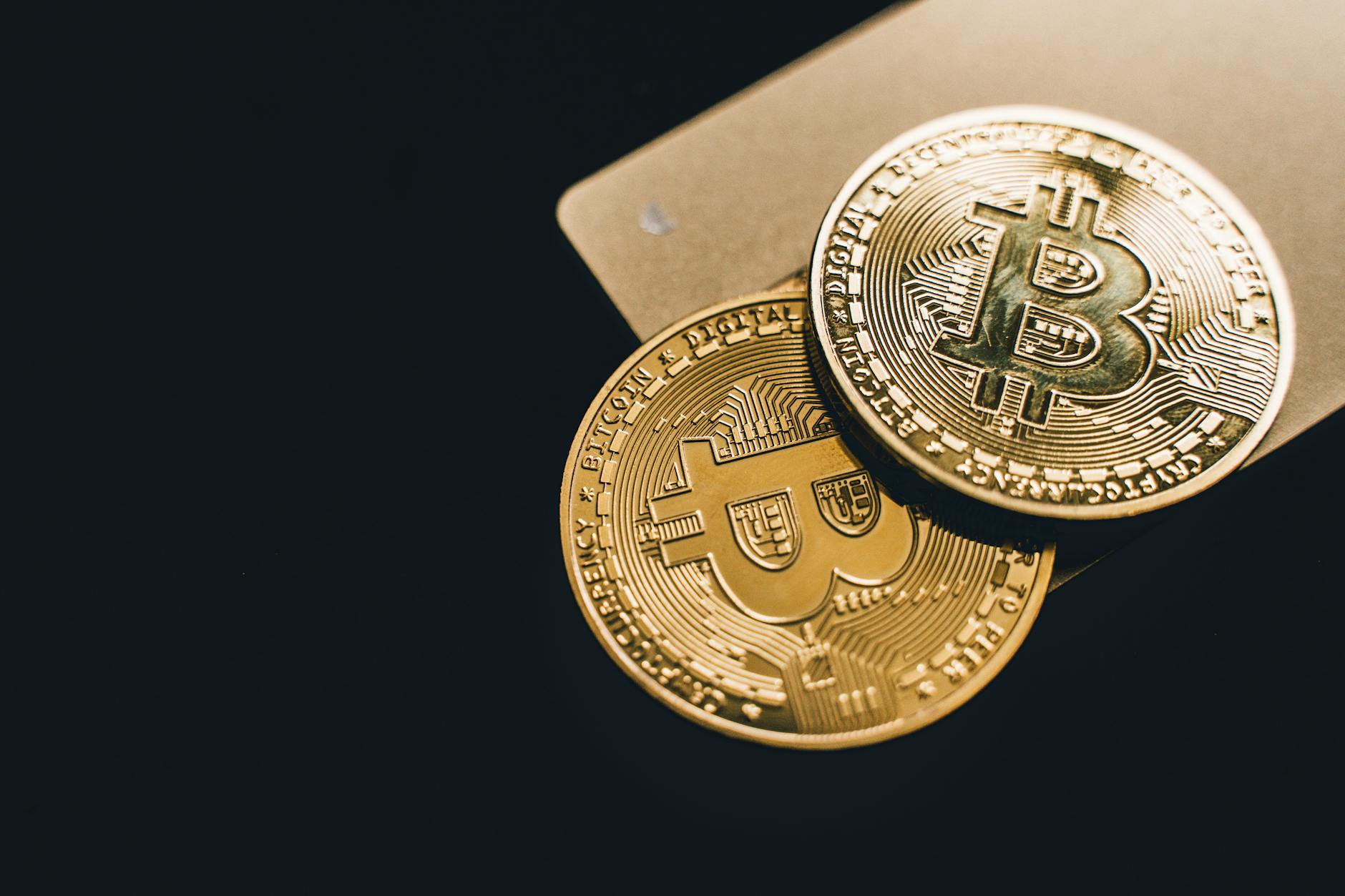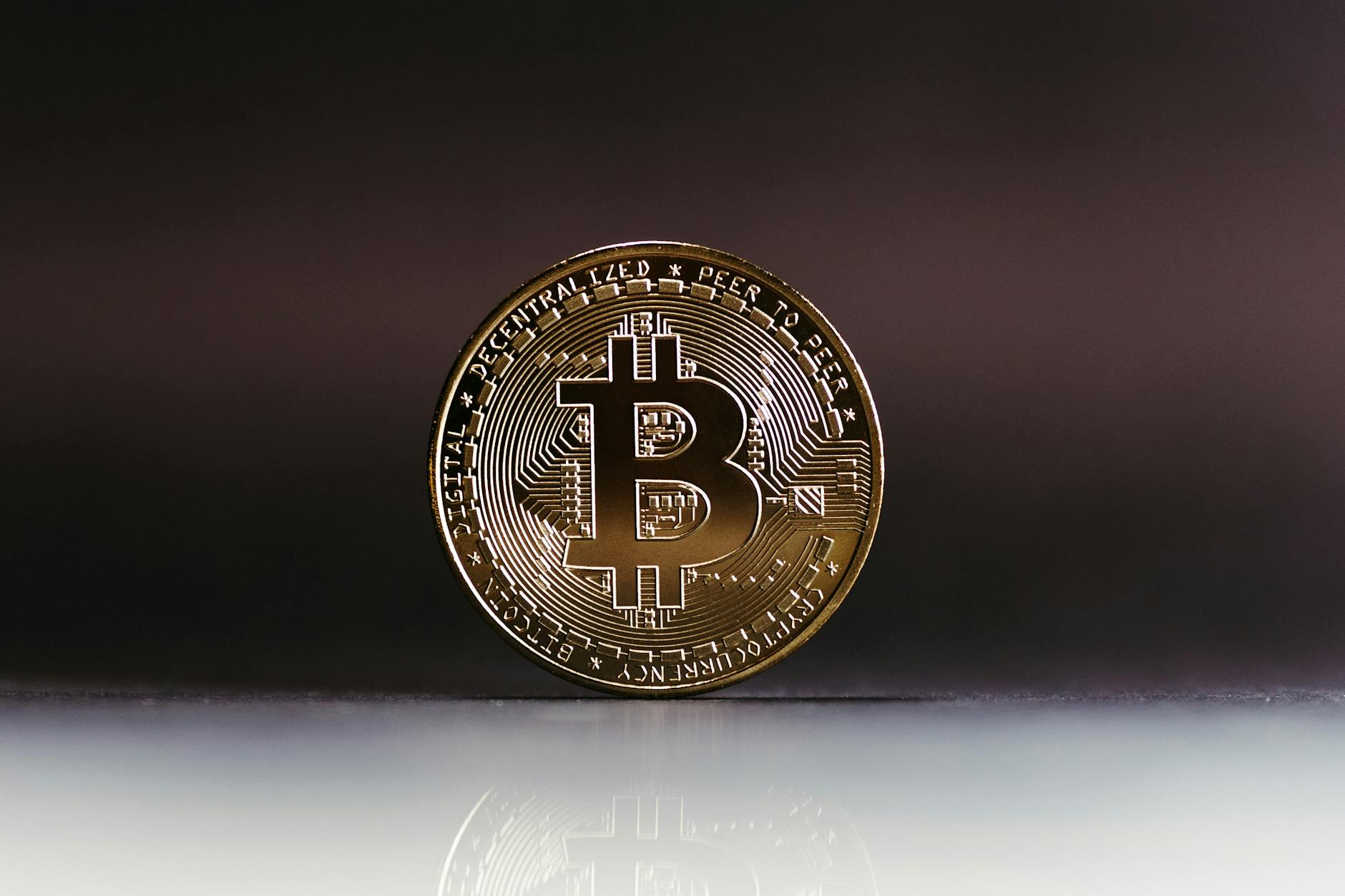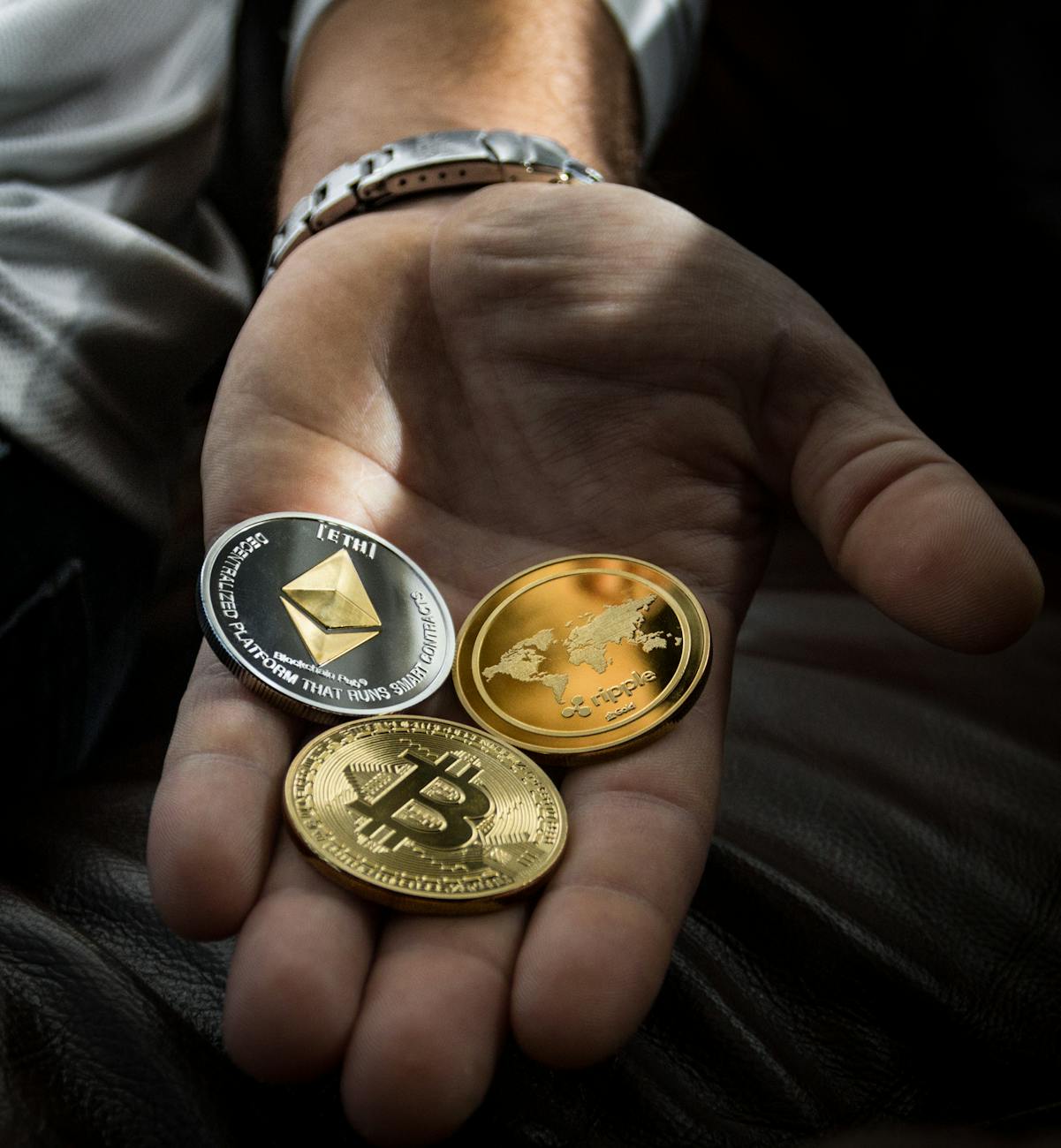How Blockchain in Financial Services Works: 10 Super Benefits and Its Future
Blockchain in financial services is a game-changer for savings and banking. It’s revolutionizing the financial services sector with more security, transparency, and efficiency. As a decentralized ledger system, blockchain does away with intermediaries and reduces the complexities of traditional banking processes.
In this article, we’ll examine blockchain technology in financial services. We’ll see how it is changing the banking sector. We’ll also examine its benefits and challenges and look into its future.

What is Blockchain Technology in Financial Services?
In financial services, this technology is being used to streamline payments, secure data, and create smarter financial contracts. Unlike traditional systems, blockchain transactions are verified by a network of computers, making fraud and unauthorized alterations virtually impossible. This level of trust and transparency is transforming the way individuals and institutions manage savings and banking.
How Blockchain is Changing Banking and Savings
Blockchain uses cryptographic techniques to protect deal data, ensuring your savings and financial activities are secure. For example, banks can use blockchain to prevent fraud by verifying each exchange on an immutable ledger.
Blockchain in financial services significantly reduces the time and cost of international payments. Traditional wire transfers can take days, but blockchain processes these transactions in minutes, often at a fraction of the cost.

Smart contracts are self-executing agreements written on blockchain. They automate tasks like paying interest on savings accounts or issuing loans, reducing paperwork and human intervention. Banks are exploring tokenization to offer fractional ownership of assets.
Imagine investing in a high-yield product with as little as $10 by purchasing tokenized shares, expanding access to savings tools. Decentralized Finance (DeFi) blockchain powers the DeFi movement, offering decentralized savings platforms where users can earn interest on traditional banks. These platforms use cryptocurrencies to give high-yield savings opportunities.
Super Benefits of Blockchain
Blockchain technology is transforming the financial services industry by offering unparalleled transparency, efficiency, and security. Its decentralized nature allows banks, businesses, and consumers to conduct transactions more seamlessly and securely. Here are the key benefits of blockchain in financial services:
1. Enhanced Security
Blockchain technology provides robust security by using cryptographic techniques and a decentralized ledger system. Each deal is encrypted. It is linked to the earlier one. This linkage makes it nearly impossible for hackers to alter or tamper with records.
Blockchain minimizes the risk of fraud by ensuring every deal is validated and immutable. Data Integrity: The decentralized nature of blockchain protects sensitive financial data from breaches.
2. Improved Transparency
Blockchain in financial services creates an immutable ledger of transactions accessible to all authorized participants. This level of transparency builds trust among users and reduces the chances of disputes.
All transactions are recorded in real-time, providing clear audit trails for compliance and regulatory purposes. Customer Trust: Transparency reassures customers that their funds and data are handled ethically.
3. Faster Transactions
Traditional financial systems often involve intermediaries, causing delays in trade processing. Blockchain eliminates these intermediaries, enabling near-instantaneous transactions. Cross-Border Payments: International transfers that typically take days can now be completed in minutes with blockchain. 24/7 Availability: Transactions can be processed any time, eliminating delays due to holidays or time zones.
4. Cost Efficiency
Blockchain reduces the need for intermediaries and streamlines processes, cutting down operational costs for financial institutions. These savings can be passed on to customers through lower fees and better rates. Elimination of Middlemen: Direct transactions on blockchain remove the costs linked to intermediaries. Streamlined Operations: Automated processes reduce administrative overhead and error rates.

5. Decentralization
Unlike traditional systems managed by central authorities, blockchain operates on a decentralized network. This ensures that no single entity controls it, increasing security and resilience. Resilience Against Failures: Decentralization prevents single points of failure, ensuring system reliability. User Empowerment: Individuals have greater control over their financial assets and data.
6. Financial Inclusion
Blockchain in financial services provides access to financial services for undermanned and unbaked populations globally. With just an internet connection, individuals can join in blockchain-based financial ecosystems.
People in remote or undeserved regions can save, send, and get money using blockchain wallets. Decentralized Finance (DeFi): Blockchain enables DeFi platforms that offer loans, savings, and investments without requiring traditional bank accounts.
7. Smart Contracts for Automation
Smart contracts are self-executing programs on the blockchain. They automatically enforce agreements based on predefined conditions. They simplify financial processes, reduce paperwork, and remove disputes. Automated Payments: Smart contracts handle recurring payments, like loan installments or interest payouts. Efficient Settlements: Processes like trade settlements are completed faster with automated execution.
8. Reduced Fraud and Errors
Blockchain decentralized and transparent structure helps prevent errors and fraud. Transactions are verified and validated by the network before being recorded, ensuring accuracy and reducing risks. Immutable Records: Once a deal is added to the blockchain, it can’t be altered, minimizing fraud. Consensus Mechanisms: Verification by multiple nodes ensures the legitimacy of each deal.
9. Tokenization of Assets
Blockchain enables the tokenization of assets. It turns physical or intangible assets into digital tokens. These tokens can be traded on the blockchain. This innovation creates new opportunities for investment and liquidity. Fractional Ownership: Investors can own portions of high-value assets like real estate or artwork. Increased Liquidity: Tokenized assets can be traded easily, providing liquidity to traditionally liquid markets.
10. Enhanced Regulatory Compliance
Blockchain in financial services simplifies compliance by providing real-time access to deal data for regulators and auditors. This ensures adherence to financial laws and reduces the risk of penalties. Regulatory Oversight: Regulators can watch transactions in real time, ensuring transparency. Efficient Audits: Immutable records make audits faster and more precise.
The Future of Blockchain in financial services
The potential of blockchain technology in savings and banking extends far beyond current applications. Financial institutions, governments, and fintechs companies continue to explore blockchain’s possibilities. It is poised to revolutionize how we interact with money and financial services. Here’s an expanded look at what the future holds for blockchain in savings and banking:
Mainstream Adoption of Decentralized Finance (DeFi)
Decentralized Finance (DeFi) is one of the most promising developments in blockchain. By 2030, DeFi platforms will directly compete with traditional banks. They will offer decentralized savings accounts, loans, and investment opportunities. These platforms run on blockchain networks and remove intermediaries.

This allows users to earn higher interest rates. They can access financial products globally without the need for a bank. DeFi platforms will offer innovative savings solutions. Users can stake cryptocurrencies to earn rewards. They can also join in liquidity pools for higher yields. Individuals in undermanned regions can access financial services via a smartphone and blockchain network, promoting financial inclusion.
Tokenization of Savings Products
Blockchain enables the tokenization of assets, which means converting tangible or intangible assets into digital tokens on a blockchain. This technology will reshape savings by providing micro-investment opportunities.
Customers can invest in tokenized high-yield bonds, real estate, or other assets with minimal capital. Banks offer tokenized savings products that automatically distribute funds into diversified portfolios, ensuring smarter financial growth.
Seamless Cross-Border Transactions
Blockchain will redefine cross-border payments by making them faster, cheaper, and more secure. Traditional wire transfers often take days and incur high fees. They will be replaced by blockchain-based payment networks. These networks are capable of settling transactions in seconds.
Lower fees mean more money stays in savings accounts. Faster transfers guarantee funds can be deployed quickly for emergencies or opportunities. Migrant workers send remittances to their home countries. They will gain significantly from blockchain’s cost-effective and reliable transfer mechanisms.
Enhanced Security and Privacy in Savings
Blockchain’s inherent security and transparency make it an ideal solution for safeguarding financial data. By leveraging cryptography and decentralized structures, blockchain ensures that customer data remains protected while transactions are transparent.
Banks will integrate blockchain with biometric authentication systems to offer ultra-secure access to savings accounts. Customers will have more control over their financial data. They will decide who can access it and for what purposes.
Real-Time Settlement and Clearing
In the future, blockchain in financial services will allow real-time settlement of transactions. This is a significant improvement over the current banking system. In the current system, settlements can take days. This will streamline processes for savings account transfers, loan repayments, and interbank transactions.
Customers will no longer have to wait for clearing periods. This means funds can be reinvested or accessed instantly. Automated, real-time processes help reduce overhead costs. This allows banks to pass on the savings to their customers. They can offer better interest rates.
Blockchain-Powered Loyalty and Reward Programs
Blockchain will enhance banking reward programs, making them more transparent and customer-friendly. For instance, blockchain-based loyalty points can be tokenized. This would allow customers to redeem them across a variety of platforms.
They can even convert them into savings. Customers earn tokenized rewards for maintaining higher savings balances or reaching savings milestones. Tokenized rewards will be used for purchases, investments, or transferred to other users seamlessly.
Smart Contracts for Automated Savings
Smart contracts are self-executing programs on a blockchain that enforce agreements automatically. These will revolutionize savings by automating tasks. For instance, they can handle recurring deposits. They can also transfer interest earnings to other accounts.
Additionally, they can reallocate funds to higher-yield investments. Customers can set up smart contracts. These contracts assign a part of their income to savings accounts instantly after deposit. Smart contracts enforce rules to keep funds locked. Funds would stay locked until specific savings goals are met. These goals include a home down payment.
Financial Ecosystems with Blockchain-Based Super Apps
Super apps platforms integrating multiple services will incorporate blockchain in financial services to create comprehensive financial ecosystems. These apps combine savings, payments, investments, and insurance under one roof, all powered by blockchain.

Users can track their savings growth, invest in tokenized assets, and make blockchain-based payments in one app. Ensures that all costs linked with financial services are clearly outlined, eliminating hidden charges.
Improved Compliance and Regulation
By 2030, blockchain will streamline compliance processes, making it easier for banks to meet regulatory requirements. Blockchain’s transparency enables regulators to watch transactions in real-time, reducing the risks of fraud and money laundering. Simplified compliance processes lower administrative costs, allowing banks to offer better savings rates. Improved regulatory oversight increases customer confidence in blockchain-enabled savings products.
By 2030, blockchain will become a foundational technology for banking. We’ll see widespread adoption of tokenized savings products. AI-integrated blockchain in financial services will offer personalized financial advice. Decentralized payment systems will gain global acceptance.
FAQ
What is blockchain technology in financial services?
How does blockchain improve security in banking?
What are the benefits of blockchain for cross-border payments?
What is Decentralized Finance (DeFi)?
How do smart contracts work in financial services?
Can blockchain reduce fraud in financial transactions?
How does blockchain enable asset tokenization?
Is blockchain used for regulatory compliance in banking?
Are blockchain-based financial services safe?
What is the future of blockchain in financial services?
Conclusion
Blockchain technology is reshaping the financial services industry, offering secure, efficient, and innovative solutions for banking and savings. From smart contracts to decentralized finance, this technology is setting the stage for a more transparent and accessible financial future. If you want to maximize your savings, consider blockchain-enabled platforms. They are your next big step in embracing the future of banking.





